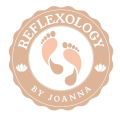Baby Toddler and child reflexology
Baby and child reflexology is a gentle, holistic therapy adapted from traditional reflexology, using specialized techniques on babies’ and children’s feet (and sometimes hands) to promote relaxation, relieve discomfort, and support overall well-being. It’s a safe and natural way to address common childhood ailments and enhance the parent-child bond.
How it works:
Reflexology works on the principle that different points on the feet (and hands) correspond to different parts of the body.
By applying gentle pressure to these reflex points, practitioners aim to stimulate the body’s own healing processes and promote relaxation and well-being.
For babies and young children, the techniques are adapted to be gentle and age-appropriate, focusing on the feet and using light pressure
Benefits of Baby and Child Reflexology:
Relief from common ailments:
Reflexology can help with teething pain, colic, constipation, earaches, and respiratory issues.
Improved sleep:
By promoting relaxation, reflexology can help babies and children sleep better,
Reduced stress and anxiety:
The gentle touch and soothing techniques can help calm and relax babies and children, reducing anxiety and promoting emotional security,
Enhanced bonding:
Reflexology provides a wonderful opportunity for parents to connect with their babies through nurturing touch
Boosted immune system:
Reflexology can stimulate lymph flow, which may help support the immune system.
Pain Relief
Children can experience pain from various sources, including medical procedures, growing pains, or chronic conditions. Reflexology has been studied for its ability to reduce pain and discomfort in pediatric patients. Research suggests that reflexology may be effective in easing pain associated with heel lancing in neonates and reducing muscle tension in children with cerebral palsy. By stimulating specific reflex points, reflexology encourages the body’s natural pain-relieving responses, making it a viable complementary therapy for pain management.
Reduction in Anxiety and Stress
Children, like adults, experience stress and anxiety, particularly when undergoing medical treatments, adjusting to new environments, or dealing with everyday worries. Reflexology’s calming effect can help reduce anxiety levels in young patients. Studies have found that children receiving reflexology sessions before medical procedures often exhibit lower stress levels and improved emotional well-being. The gentle nature of reflexology makes it a comforting therapy for children, providing them with a sense of security and relaxation.
Improved Sleep Patterns
Many children struggle with sleep disturbances, whether due to hyperactivity, anxiety, or medical conditions. Reflexology has been linked to better sleep quality, as it helps the body relax and reduces tension. Regular sessions may promote deeper, more restful sleep, making it a beneficial practice for children who experience insomnia or frequent night waking. Parents often find that reflexology, when incorporated into bedtime routines, can improve overall sleep duration and quality.
Digestive Support
Digestive issues such as colic, constipation, and indigestion are common among infants and young children. Reflexology may offer relief by stimulating the reflex points associated with the digestive system. Gentle pressure applied to specific areas on the feet can encourage bowel movement and relieve discomfort. Some parents have reported noticeable improvements in their children’s digestion after regular reflexology sessions, making it a natural alternative to conventional treatments.
Support for Neurological Conditions
For children with neurological conditions such as cerebral palsy, reflexology may provide additional support by improving motor function and reducing muscle stiffness. Although more research is needed, preliminary studies suggest that reflexology may help ease muscle tension and improve circulation, potentially enhancing mobility and comfort in children with neurological challenges. While it should not replace traditional medical treatments, reflexology can be used as a complementary approach to support overall well-being.
How Reflexology Works for Children
During a reflexology session, a trained practitioner applies gentle pressure to specific points on the child’s feet, hands, or ears. The session typically lasts between 20 to 40 minutes, depending on the child’s age and needs. Unlike deep tissue massage, reflexology is gentle and should never cause pain or discomfort. Most children find it soothing and enjoyable, making it an easy therapy to incorporate into their routine.
